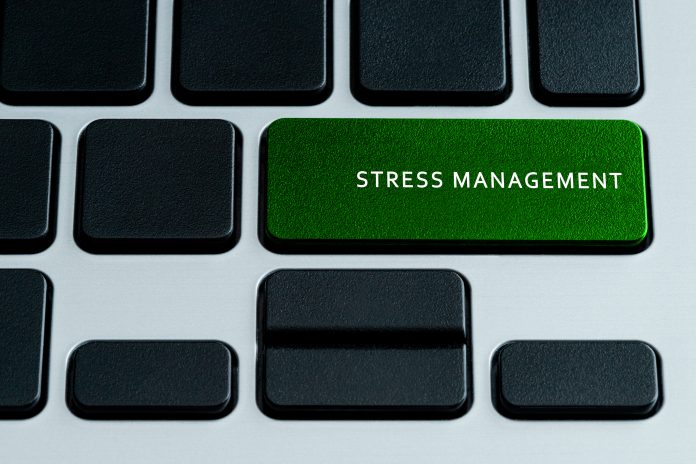As we enter Stress Awareness Week, Professor Kevin Curran, Senior IEEE Member and professor of cybersecurity at Ulster University explores whether technology can really be the answer to our modern anxieties that are often caused by technology itself?
Technology is getting more pervasive and increasingly demands our attention, which risks disrupting our healthy and balanced lives. Often, it’s the first thing we look at, speak to or hear in the morning and the last thing we scroll on at night. In fact, many are now linking the prolific decline in mental health to our ‘always-on’ lifestyles. With Stress Awareness Week here, tech leaders are working to combat this negative impact with an uprising of technology aimed squarely at improving our mental wellbeing. From anxiety to depression, technology is being used alongside professional mental health care to go beyond wellness and meditation apps and into deeper psychology.
The rise of ‘techscapism’
Indeed, in just one example of the latest technology being used and applied to counter stress and anxiety, tech innovators, spas and leisure centres are harnessing the escapism that virtual reality (VR) provides. Studies have shown that VR can successfully reduce stress and aid relaxation [1]. Given this and broader research around mindfulness and environmental psychology, the deployment of this immersive technology within a health club or spa space can transport visitors to new ‘locations’ and worlds – from tropical beaches to snowy log cabins – to reduce stress and help people to unwind for the fraction of the cost of such a holiday.
Always on or always available?
Loneliness has been contributing to the erosion of public mental wellness over the last few years and in response, campaigns, charities and even John Lewis Christmas adverts have been seeking to raise the profile of the issue. Technology is now joining the revolution, since it has the advantage of being convenient, anonymous (if needed), lower cost, 24/7, consistent and offers objective data collection.
The rise of instant messaging and chatbots has transformed the way people and businesses interact. This trend is also moving into the healthcare sector, where professionals are beginning to use ‘chatbots’ for patients. It is already well known that the perceived anonymity makes patients can feel more relaxed revealing personal details to an automated agent than to a clinician. Subot, for example, is a digitally enabled therapy bot in the UK, which addresses male suicide. Results from a study showed that participants were five times more likely to speak their thoughts when talking to the chatbot [2]. This is vital for countering the rising number of male suicides, which made up three-quarters of all suicide deaths in the UK in 2018, according to the office for national statistics [3].
Data – the helping hand
Digital phenotyping harnesses data gathered from mobile devices like smartphones, wearable devices, or even connected fridges. The aim is to learn about each person’s behaviour and state of health. Some examples of the kind of data captured are the time someone spent looking at their phone and the way they ‘click and tap’. The hope is to turn this into valuable clinical information.
There were clinical trials in the US of the Beiwe app with patients with schizophrenia. Results showed that ‘digital markers’ could help recognise those at higher risk of relapse and intervene before the worsening of their illness. Additionally, by using data collection and digital phenotyping technologies doctors and healthcare workers can help people maintain their independence safely with the technology flagging any concerning behaviour, should it arise.
Another study in the US used a smartphone’s microphone to record random snippets of people’s talking and the ambient noise. Some aspects of these conversations, such as tone of voice or length of a call, were analysed to monitor people’s state of mind.
Turning to apps
Lastly, there has been a rise in apps exclusively dedicated to reducing anxiety, promoting healthier and better sleep, as well as meditation. There are also self-management apps, which allow users to set up medication reminders or log issues of stress, anxiety, or sleeping. Some of these apps help with cognitive remediation, which is essentially improved thinking skills, and related skill-training apps that help users learn new coping or thinking skills.
Ultimately, while many may still blame technology for our modern-day strains and stresses, now there is a group of businesses, researchers and products that are pushing to help alleviate them and change the perception of technology from foe to friend. Some of these technologies – like meditation apps and chatbots – are already established widely, while the likes of VR spas are just in in their infancy. With more research and investment in this area, many more technologies and the way that they are applied, will emerge to hopefully improve general mental wellness in society.
References
- K. D. Thoondee and A. Oikonomou (2019) Using virtual reality to reduce stress at work,” 2017 Computing Conference, London, 2017, pp. 492-499, DOI: 10.1109/SAI.2017.8252142 https://ieeexplore.ieee.org/document/8252142
- C. Martinez (2019) Technology will revolutionise mental health care – but only if we put people at the centre. Mental Health Today, 31 July 2019, https://www.mentalhealthtoday.co.uk/innovations/technology-will-revolutionise-mental-health-care-but-only-if-we-put-people-at-the-centre
- OFNS (2019) Suicides in the UK: 2018 registrations, Office for National Statistics, September 2019, https://www.ons.gov.uk/peoplepopulationandcommunity/birthsdeathsandmarriages/deaths/bulletins/suicidesintheunitedkingdom/2018registrations#suicides-in-the-uk











